I am planning to implement a screen arrangement view for a desktop Java application. By screen arrangement view, I mean a view that allows to arrange several rectangles around a central rectangle, so that no gaps are allowed, much like the screen arrangement interface in eg macOS or Windows works:
The user would be able to drag the rectangles (except the central one) around and place them somewhere adjacent to another rectangle (that is connected to another rectangle that is connected to another rectangle .... that is connected to the central rectangle). The rectangles would automatically move to a correct spot if dropped at an incorrect spot.
I have experience in Java (Android), but little knowledge of User Interface design on desktop Java. I am using Swing for all UI I have already in my application.
I have done some research but could not find any similar implementation or question on SO.
However, I do not want to reinvent the wheel, so before I start implementing from scratch, I have these questions:
- What search terms could I use for further research?
- Are there any built-in components I could use as a base?
- Is there maybe an open-source component I could use?
- Does anyone know an implementation of such a control in any language that I could use as a reference?
- How would you implement such a control?
Any help is highly appreciated!

